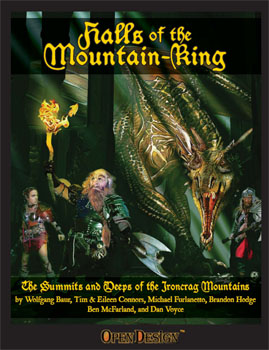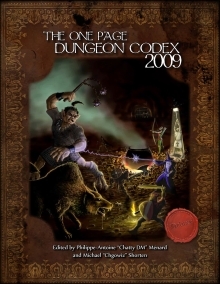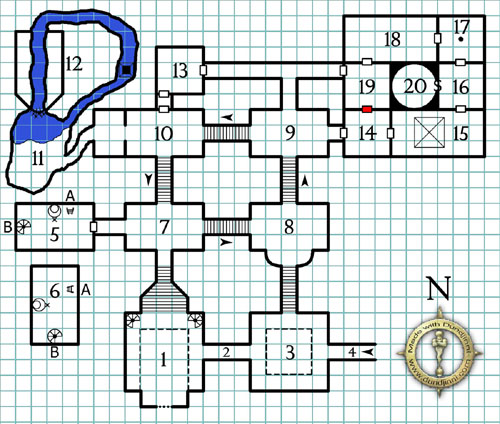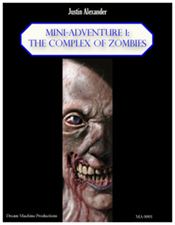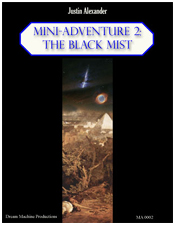Keep on the Shadowfell was the inaugural introductory product for 4th Edition. When it was released, I shared my initial impressions and eventually ended up writing a lengthy series of essays in which I remixed the entire adventure.
One of the major problems I had at the time was the sheer sloppiness of the module: There were continuity errors in the adventure scenario and numerous self-contradictions in the rules. Ignoring some of the larger creative and structural issues with the adventure, on a very basic level the product was a mess.
In April 2009, Wizards of the Coast released a revised version of the module as a free PDF on their website. I didn’t pay much attention to it because I had already sampled 4th Edition, found it lacking in everything I value in an RPG, and moved on. But I did think it was a rather nice gesture on WotC’s part to make a corrected version of the product available.
Recently, however, I decided to re-visit this material with an eye towards using my remixed version of the module as the basis for an OD&D one-shot. Remembering that the module had been revised, I tracked down the PDF. My plan was to re-read the revised version of the module, see what had been improved, and then adapt my remix notes as necessary if I thought incorporating the changes would be worthwhile.
Unfortunately, I couldn’t even get past the first paragraph of the first encounter before discovering that WotC’s revision was just as sloppy as the original product.
The original module describes the encounter like this (pg. 16): “The player characters are on the King’s Road traveling toward Winterhaven east to west (or right to left on the map).” They are then ambushed by kobolds, as shown on this map:
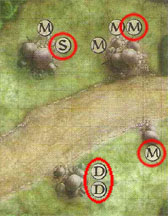
The obvious problem, as I detailed in my original remix essay, is that the indicated kobolds are all standing in plain sight for characters traveling east to west along the road.
WotC’s keen-eyed revisers noticed the same thing, but they didn’t want to redo the cartography. So they opted to simply change the direction that the PCs are traveling (pg. 6): “The player characters are on the King’s Road traveling toward Winterhaven, west to east (or left to right on the map).”
Problem solved!
… except that’s completely impossible.
Because two pages earlier in the module we can see this map of the local area:
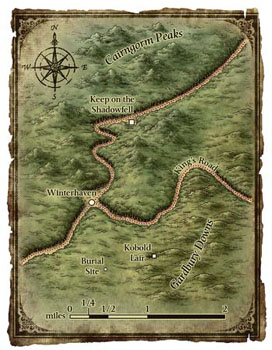
And, as you can clearly see, Winterhaven is at the western end of the King’s Road. You cannot travel west-to-east anywhere on the King’s Road and end up at Winterhaven.
Mistakes, of course, get made. (For example, both the original and revised versions of the module refer multiple times to the Burial Site being southwest of town. You’ll note that it isn’t.) But what you have here is an acknowledgment that there is a problem that needs to be fixed; a decision being made (either deliberately or ignorantly) to not fix the root of the problem; and ending up with a half-assed effort that just creates an entirely different problem.
And it doesn’t even fix the original problem, because there are still kobolds standing in plain sight.
This is symptomatic of WotC’s general culture of not-fixing (or even anti-fixing).

